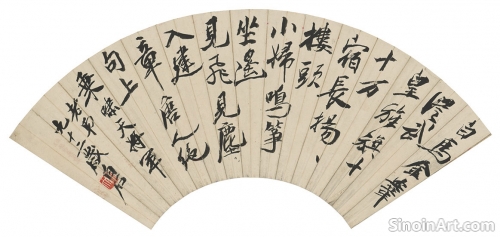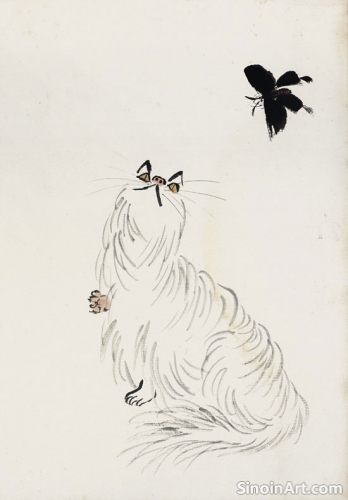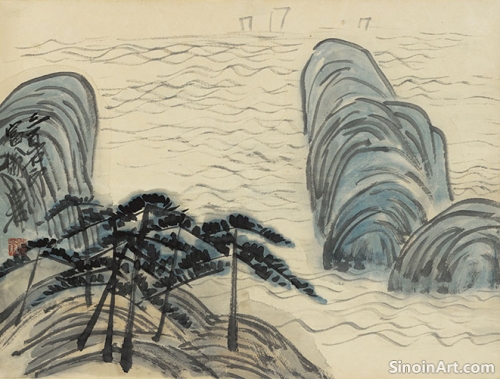Xieyi and the Concept of Spontaneity
|
Spontaneity is a core principle of Xieyi painting, reflecting the emphasis on intuition, direct experience, and the expression of the artist's immediate feelings. The artist seeks to capture the essence of the subject in the moment, without overthinking or over-analyzing. This immediate approach is a reflection of the inner nature of the artist.  Unlike more meticulous styles of painting, Xieyi embraces the imperfections and accidents that can occur during the creative process. Rather than being seen as mistakes, these unexpected marks are often incorporated into the artwork, adding a sense of spontaneity and dynamism. The artist is encouraged to work with the moment, not against it.  The idea of painting “in the moment” aligns with the principles of Chan (Zen) Buddhism, which emphasizes mindfulness and living in the present. The artist becomes fully present in the act of painting, allowing their intuition and inner feelings to guide their brushstrokes. The painting process becomes a form of meditation, a way to achieve a state of unity with the art.  Spontaneity in Xieyi painting does not mean that it is random. It requires a deep understanding of brushwork, composition, and the nature of the materials. It requires confidence and skill. The artist's hand must be trained to translate their intentions into expressive marks on the paper. Spontaneity is only possible through preparation. The spontaneous nature of Xieyi paintings invites the viewer to experience the artwork in a fresh and immediate way. The brushstrokes retain their energy and vitality, conveying the artist's feelings and intentions. The viewer feels like they are a part of that creative moment. It’s a shared experience that transcends time. |
Tag : Spontaneity in art, intuitive painting, Chan and art, freehand technique, immediacy in art
Related information
- The Future of Xieyi: Innovation and Tradition
- Learning Xieyi: Pathways to Expressive Mastery
- The Cultural Significance of Xieyi: Beyond Artistic Form
- The Importance of Practice in Xieyi
- The Legacy of Xieyi: From Tradition to Innovation
The future of Xieyi painting balances innovation and tradition, with artists exploring new materials and technologies while honoring core principles, and its global reach ensures a continued cross-cultural exchange and appreciation of its power and expressiveness, allowing it to continue to adapt and resonate through the generations.
This article provides an overview of the pathways for aspiring Xieyi artists, including formal education, private instruction, online resources, and the importance of regular practice and dedication to achieving mastery.
This article explores the cultural significance of Xieyi painting, highlighting its connection to Daoist philosophy, Chinese values, artistic heritage, and its role in preserving and expressing Chinese cultural identity.
Dedicated and consistent practice is essential for mastering Xieyi painting, developing technical skills, intuition, and spontaneity, while also fostering patience, perseverance, and a deeper understanding of the art form's philosophy and aesthetics, transforming the practice into a form of self-discovery.
This article traces the legacy of Xieyi painting from its origins in the Song Dynasty to its continuous evolution through subsequent dynasties, exploring its transformation from a tradition to a vibrant contemporary practice.